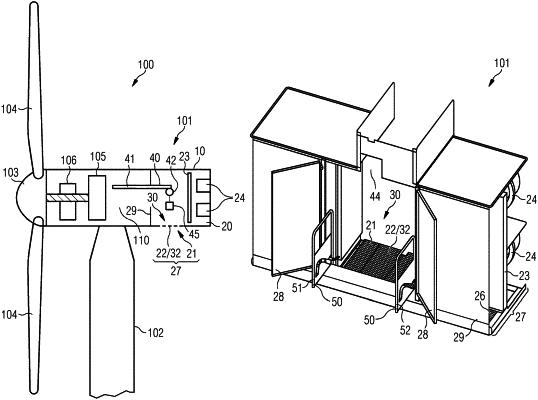| CPC F03D 80/50 (2016.05) [F03D 80/88 (2016.05); F05B 2240/14 (2013.01); F05B 2260/20 (2013.01); F05B 2260/64 (2013.01)] | 13 Claims |

|
1. A nacelle housing of a nacelle of a wind turbine, comprising:
a ventilation opening of a cooling system of the wind turbine, the cooling system including at least one fan and at least one heat exchanger and configured and arranged to provide an airflow through the ventilation opening;
a cover closing the ventilation opening, the cover being configured to allow the airflow through the cover and the ventilation opening; and
a service hatch for hoisting a load into or out of the nacelle housing, wherein the service hatch is provided by the ventilation opening and the cover;
wherein the cover is configured as a service door of the service hatch that can be opened to allow a hoisting of a load through the ventilation opening into or out of the nacelle housing;
wherein the service door comprises a grating, a grille or plural openings to allow the airflow through the service door and the ventilation opening when the service door is closed;
wherein the service hatch comprises a safety barrier configured to restrict access to the service hatch, the safety barrier having a closed position in which an entrance path for an operator to a space above the service door is blocked and an open position in which the entrance path is unblocked, further wherein the safety barrier comprises two barrier elements coupled to each other in such a way that a movement of one of the barrier elements results in a corresponding movement of the other barrier element.
|